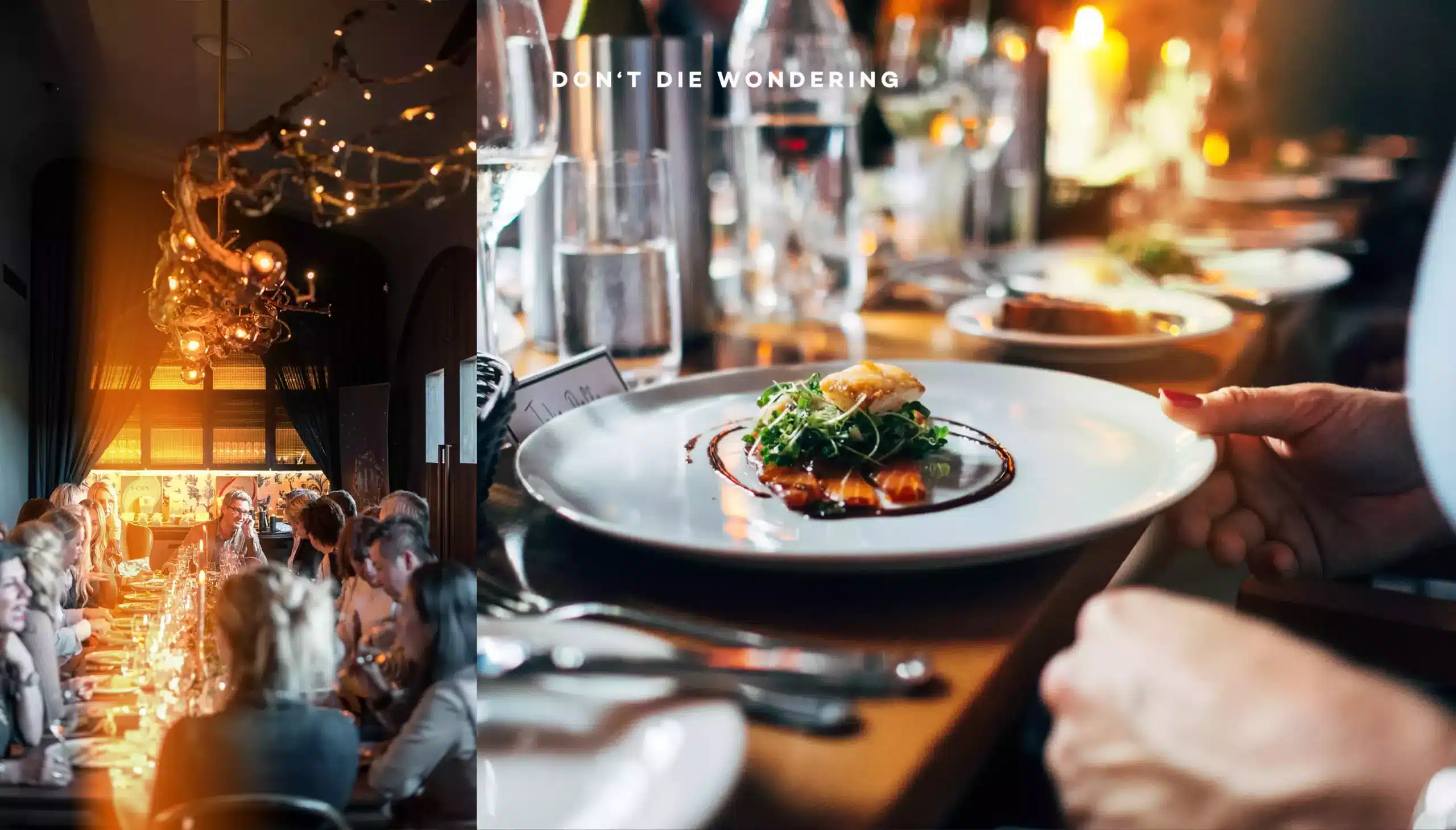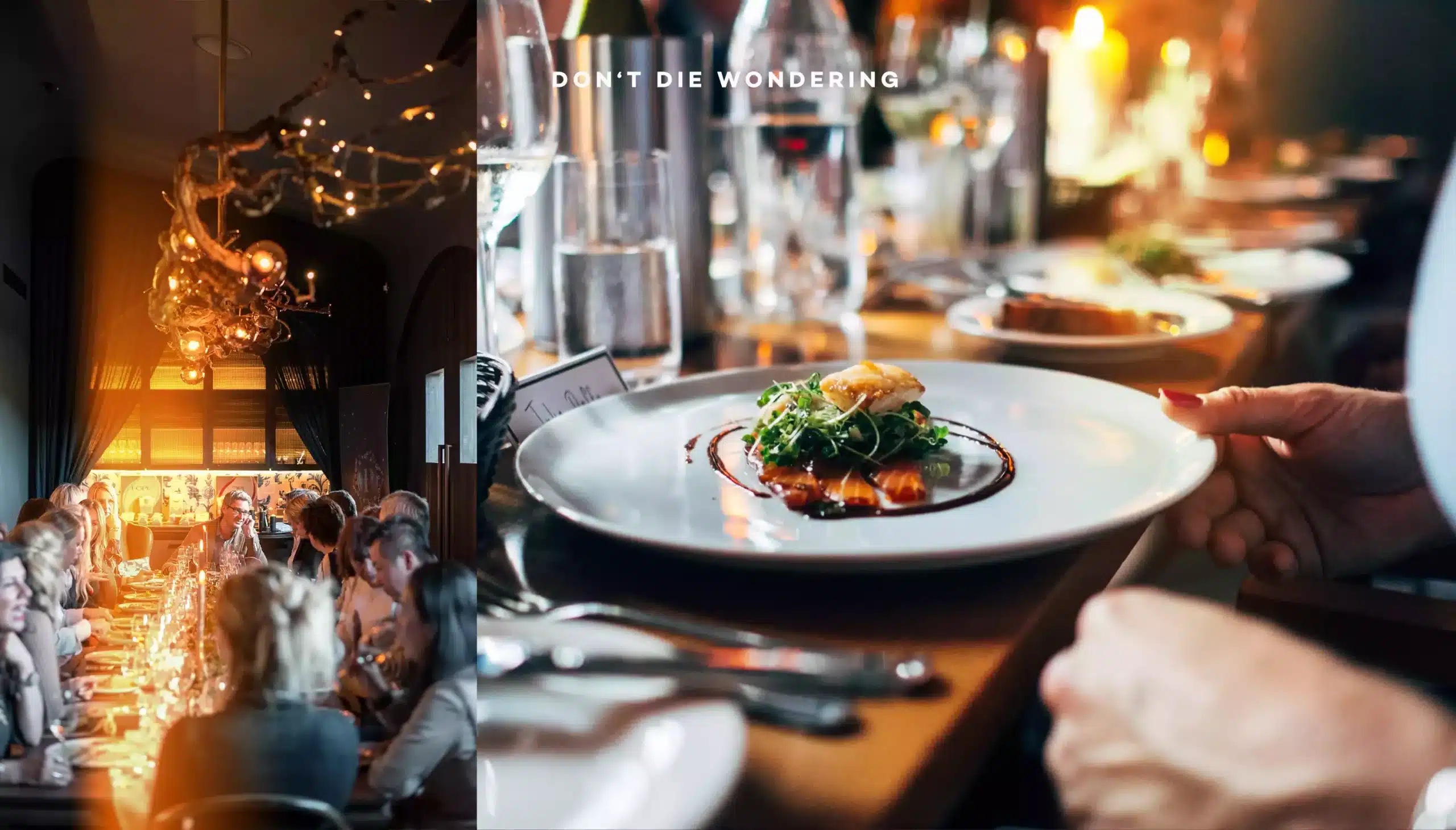The ultimate guide on how to navigate and understand cutlery etiquette at a fancy dinner table setting.
We’ve all been there, haven’t we? The moment you walk into a dinner and your brain does a double-take at the sheer army of knives, glasses, napkins, and whatnots sprawled across the table. It’s a cutlery convention. You sneak a peek at your tablemates, hoping they have some idea of which knife to fetch first because there are too many trinkets on the table than you knowledgeably know how to use. It’s about time we conquered the art of dining without looking like we’re auditioning for a comedy show, right?

The Instruments:
Cutlery Galore:
- Dinner Fork: This is your regular fork. There’s no real mystery behind its use, other than perhaps how to hold it. More on that later.
- Salad Fork: Slightly smaller and more delicate, the salad fork assists in crafting dainty bites of greens. Its size suggests you’re in for a lighter course, but don’t be fooled – it’s just as important in crafting the perfect bite.
- Fish Fork: Elegantly slender and often accompanied by a slightly curved shape, the fish fork is primed for fish dishes specifically.
- Soup Spoon: With a rounded bowl and shallow depth, the soup spoon glides through broths and consommés, ensuring each spoonful delivers a burst of flavor. Remember, the art lies in sipping silently, not splashing!
- Dinner Knife: The heavyweight of the knife family, this utensil commands attention at the table. Its sturdy blade is designed to tackle heartier cuts of meat with finesse and precision.
- Fish Knife: More nimble than its dinner counterpart, the fish knife boasts a serrated edge that effortlessly dismantles the tender flesh of fish. Due to the nature of what you’re eating, there is no need for heavily serrated cutting utensils.
- Butter Knife: Short and sweet, this dainty knife is a master of spreading butter, whether on rolls or bread.
Plates and Their Purpose:
- Dinner Plate: The grand stage for your gastronomic adventures, the dinner plate is where the main event unfolds. It’s where main courses – aka the real backbone of whatever you’re eating – will be served.
- Salad Plate: Smaller and more intimate, the salad plate hosts a canvas of greens and lighter fare. Its size keeps portions in check while ensuring your salad shines like a gourmet mosaic.
- Bread Plate: Nestled conveniently beside your place setting, the bread plate serves as a temporary landing zone for your freshly buttered slices. It saves your main plate from a buttery takeover and keeps your bread pristine.
- Soup Bowl: Rounded and deep, the soup bowl cradles the soul-warming concoctions served at the beginning of your feast. Handle it with grace, and remember that the soup spoon is your chaperone to liquid delight.
Glasses and Their Secrets:
- Water Glass: Water glasses are the basic, often round glasses you probably have in your kitchen cupboard. No major mysetry there.
- Wine Glass: A sommelier’s dream, the wine glass comes in various shapes to accentuate the flavors and aromas of different wines. Red, white, or sparkling, each has its dedicated vessel. Red wine glasses boast larger bowls with wide openings to aerate the wine, soften tannins, and enhance aromas. White wine glasses, featuring slightly narrower bowls and tapered openings, preserve delicate aromas, maintain cooler temperatures, and accentuate subtle flavors. Sparkling wine flutes maintain effervescence. The variations in design optimize the tasting experience for each type of wine, showcasing reds’ complexity and whites’ nuances.
- Port/Sherry Glass: Smaller than its counterparts, this glass cradles fortified wines like port and sherry. Its diminutive size amplifies the intensity of these potent potables.

The Rules
There’s no use understanding fancy dinner cutlery if you haven’t mastered the etiquette to go along with it.
Start with a poised grip on your utensils – knives and forks are wielded with grace, not brandished like weapons. The key to holding cutlery correctly is to maintain a gentle grip, and never hold too close to the stem. As to where to start, make sure you work your way from the outside in, making use of the smaller cutlery first.
Plates, those canvases of cuisine, demand respect too. Avoid the temptation to treat them like a playground – no excessive tapping or spinning. And remember, your bread plate is a designated buttering zone, not a canvas for doodles or to plate the rest of your food.
When it comes to glasses, particularly if drinking white wine, make sure to hold them by the stem to prevent your touch from altering the temperature of the contents. When toasting, ensure a gentle clink – we’re celebrating, not staging a glass percussion concert.
Napkin etiquette involves placing it on your lap upon sitting, unfolding it discreetly, and using it throughout the meal for blotting lips and fingers. When leaving the table temporarily, loosely place the napkin on your chair. At the meal’s end, neatly fold the napkin and place it beside your plate.
Above all, pace yourself. A well-choreographed meal requires sips and bites in harmony, ensuring that your glass isn’t dry while others are still savoring their bites. It’s a performance of patience, where each utensil and vessel has its part to play in the grand orchestration of a refined dining experience.


